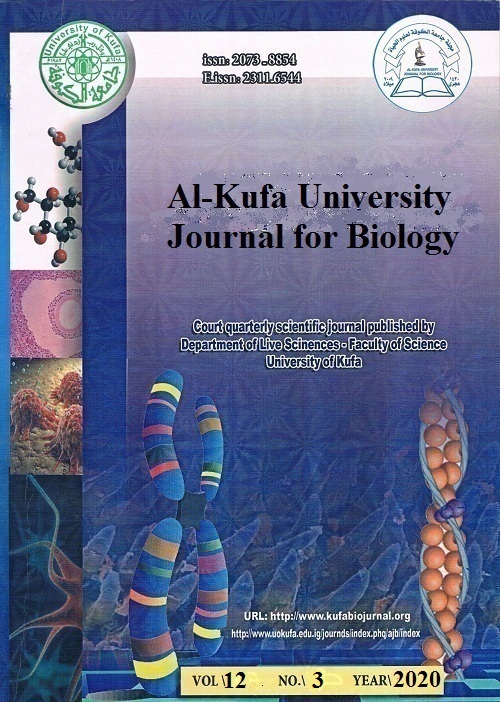Pathogenesis of Streptococcus pyogenes and immune response
DOI:
https://doi.org/10.36320/ajb/v12.i3.11796Keywords:
Streptococcus pyogenes, immune response, beta-hemolyticAbstract
Streptococcus pyogenes is a Gram-positive beta-hemolytic bacteria, also known as group A streptococci, that causes a range of infections. The most common presentation is acute pharyngitis. GAS can be subdivided into >100 serotypes by the M-protein antigen that is located on the cell surface and by fimbriae (hairlike fuzz) that project from the outer edge of the cell. Classically, typing of the surface M protein relied upon available polyclonal antisera. GAS produce and release into the surrounding medium a large number of biologically active extracellular products. Some of these are toxic for human and other mammalian cells. Streptolysin S (SLS) is a small oxygen-stabile toxin responsible for β-hemolysis of GAS on blood agar, while streptolysin O (SLO) is an oxygen-labile, cholesterol-dependent toxin .Both SLS and SLO injure cell membranes, not only lysing red blood cells, but also damaging other eukaryotic cells and membranous subcellular organelles.15 Streptolysin O is antigenic; streptolysin S is not. Streptococcal pyrogenic exotoxins (SPEs) are secreted factors with the capacity to act as superantigens and trigger T-cell proliferation and cytokine release.
Downloads
References
Amano,A.; Ichiro Nakagawa,I. and Yoshimori,T.(2006).Autophagy in Innate Immunity against Intracellular Bacteria, The Journal of Biochemistry. 161–166 DOI: https://doi.org/10.1093/jb/mvj162
Ghasemi A., Namaki S ,Abbas Mirshafiey,PhD Streptococcus pyogene journal of clinical chines medicine volume 4 ; supplement:9-18
Slotved H.C., Elliott J., , ompson T., and Konradsen H. B. (2003).“Latex assay for serotyping of group B Streptococcus isolates,” Journal of Clinical Microbiology, vol. 41, no. 9, pp. 4445–4447, DOI: https://doi.org/10.1128/JCM.41.9.4445-4447.2003
Shulman ,S.T.; Bisno, A.L. and Clegg ,H.W.(2012). Clinical practice guideline for the diagnosis and management of group A streptococcal pharyngitis:2012 update by the Infectious Diseases Society of America. Clin Infect Dis. 55(10):e86–e102. DOI: https://doi.org/10.1093/cid/cis629
Wessels ,M.R. (2016).Streptococcal Pharyngitis N Engl J Med .364:648-55 DOI: https://doi.org/10.1056/NEJMcp1009126
Helal Z.M., Rizk DE.E., Adel El-Sokkary M.M. , and Hassan R.(2020) Prevalence and Characterization of Streptococcus pyogenes Clinical Isolates from Different Hospitals and Clinics in Mansoura. Hindawi International Journal of Microbiology Volume Article ID 5814945, 11 pages https://doi.org/10.1155/2020/5814945 DOI: https://doi.org/10.1155/2020/5814945
Walker ,M. J.; Barnett ,T. C.; McArthur ,J. D.; Cole ,J. N. and Gillen C. M.(2014). Disease manifestations and pathogenic mechanisms of group A streptococcus. Clinical Microbiology Reviews. 27(2):264–301 DOI: https://doi.org/10.1128/CMR.00101-13
Golińska ,E.; Linden ,M.; Więcek ,G.; D. Mikołajczyk ,D.; Machul ,A.;Samet ,A.; Piórkowska ,A.; Dorycka, M.; Heczko , P.B.and Strus,M.(2016). Virulence factors of Streptococcus pyogenes strains from women in peri-labor with invasive infections. Eur J Clin Microbiol Infect Dis . 35:747–754 DOI: https://doi.org/10.1007/s10096-016-2593-0
Timmer, A.M.; Timmer,J.C.; Pence, M.A.; Hsu, L.C.; Ghochani,M.;. Frey, T.G.; Karin, M.; Salvesen, G.S. and Nizet,V. (2009). Streptolysin O Promotes Group A Streptococcus Immune Evasion by Accelerated Macrophage Apoptosis THE JOURNAL OF BIOLOGICAL CHEMISTRY VOL. 284, NO. 2, pp. 862–871 DOI: https://doi.org/10.1074/jbc.M804632200
Kemble , S. K.; Westbrook , A.; Lynfield , R.; Bogard, A.; Koktavy ,N. and Lappi V.(2013). Foodborne outbreak of group a streptococcus pharyngitis associated with a high school dance team banquet--Minnesota, 2012. Clinical Infectious Diseases. 57(5):648–654 DOI: https://doi.org/10.1093/cid/cit359
Bisno AL, Brito MO, Collins CM. Molecular basis of group A streptococcal virulence (2003). Lancet Infect Dis;3:191–200. DOI: https://doi.org/10.1016/S1473-3099(03)00576-0
Doern CD, Roberts AL, Hong W, et al. (2009). Biofilm formation by group A Streptococcus: a role for the streptococcal regulator of virulence (srv) and streptococcal cysteine protease (SpeB). Microbiology;155:46–52 DOI: https://doi.org/10.1099/mic.0.021048-0
Ogawa, H.; Ogawa, M.; Terao, T.; Sumitomo,Y.; Nakata, T.; Ikebe,M.; Maeda,K.and Kawabata, S. (2013) Cysteine proteinase from Streptococcus pyogenes enables evasion of innate immunity via degradation of complement factors. J. Biol. Chem.288, 15854–15864 DOI: https://doi.org/10.1074/jbc.M113.469106
Kwinn ,L.A. and Nizet,V. (2007).How group A Streptococcus circumvents host phagocyte defenses DOI: https://doi.org/10.2217/17460913.2.1.75
Mortensen R., Nissen T.N.,, Thoma Blauenfeldt T., Christensen J.P., Andersen P. and Dietrich J.(2015).Adaptive Immunity against Streptococcus pyogenes in Adults Involves Increased IFN-g and IgG3 Responses Compared with ChildrenThe Journal of Immunology, Print ISSN: 0022-1767 Online ISSN: 1550-6606.2015 DOI: https://doi.org/10.4049/jimmunol.1500804
Price J. D., J. Schaumburg C. Sandin, J. P. Atkinson, G. Lindahl, and C. Kemper. (2005). Induction of a regulatory phenotype in human CD4+ T cells by streptococcal M protein. J. Immunol. 175: 677–684 DOI: https://doi.org/10.4049/jimmunol.175.2.677
Downloads
Published
How to Cite
Issue
Section
License
Copyright (c) 2020 Oruba K. Al-Bermani, Hawraa Wahab Al-Kaim, Ali-Malik Saad

This work is licensed under a Creative Commons Attribution 4.0 International License.
which allows users to copy, create extracts, abstracts, and new works from the Article, alter and revise the Article, and make commercial use of the Article (including reuse and/or resale of the Article by commercial entities), provided the user gives appropriate credit (with a link to the formal publication through the relevant DOI), provides a link to the license, indicates if changes were made and the licensor is not represented as endorsing the use made of the work.












